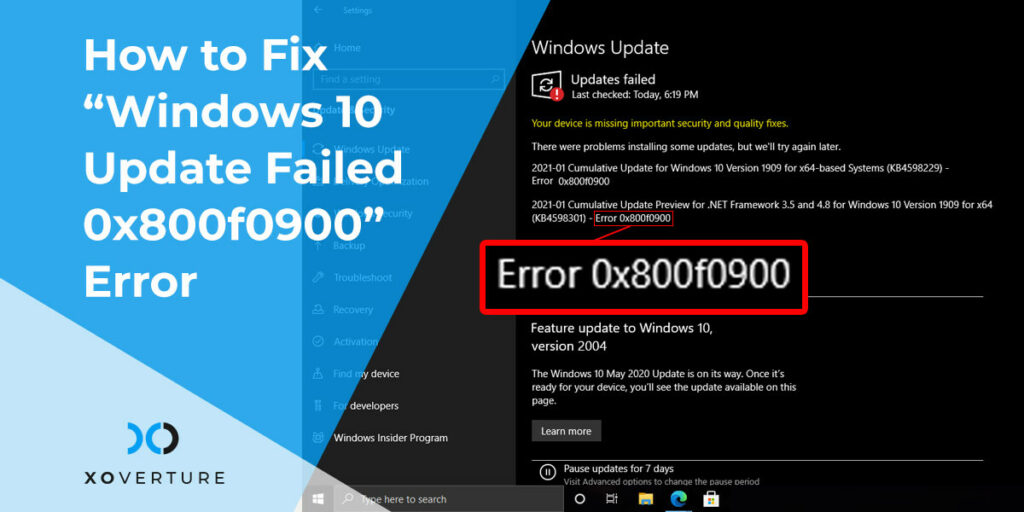Windows 10 often comes up with new updates. It’s very normal to come across an error with the code 0x800f0900 while trying to update Windows 10. The code (0x800f0900) is given to the error that stops us from downloading updates. This error usually occurs when your system either has corrupted Windows image or missing/damaged files or unnecessarily stored cache. The error also occurs if your system has been hit by malware or viruses.
If you have faced this error and don’t know how to fix it, don’t worry, the blog will explain a few ways that you can use to resolve this issue.
How To Fix an Update Error 0x800f0900 On Windows 10?
Let’s have a look at a few methods that you can use to fix this error:
Update Troubleshooter Can Be Used to Repair Corrupted Files
Ensure that you have an updated troubleshooter before attempting to resolve an update-related issue. Once you have updated it follow the following steps to fix the error:
- Open the Settings application on your computer using the “Windows & I” keys or go on the Start menu and click on settings.
- Click on Windows Update.
- Select Update & Security, followed by Additional Troubleshooters on the next window.
- To start the process, click on the Run the troubleshooter button. The troubleshooting process will start, and the issues will be fixed automatically.
- Once you’ve finished, restart your computer to ensure that the most recent modifications are saved.
- After you have completed the above-mentioned steps then, click on the Run button that is located next to Windows Update.
Install the Update Manually
Installing the update manually is one of the best and easiest options to quickly resolve this issue. These are the steps to install the update manually:
- Open the Microsoft Update Catalog webpage in your browser.
- You will find a search box on the right-hand side of the window. There type in the KB (Knowledge Base) code and click on “Search”.
- A list will appear in front of you. In this, select the version for the operating system and CPU architecture that you are using, and click Download.
- You will see a new window on your screen. Click the update link. The update will start to download.
- Once it is downloaded, run its installer.
- You will be asked for confirmation. Click yes to confirm the installation.
- Click on Restart Now once the update is installed.
Wrapping Up
If the explained methods do not work, you can try other methods like using Windows 10 Update Assistant, running the Deployment Image & Servicing Management (DISM) Scan, running the System File Checker (SFC) Scan, and restarting Windows Update Services. Trying these few things will definitely help in solving this issue. However, if the error still persists, consider taking professional help.




